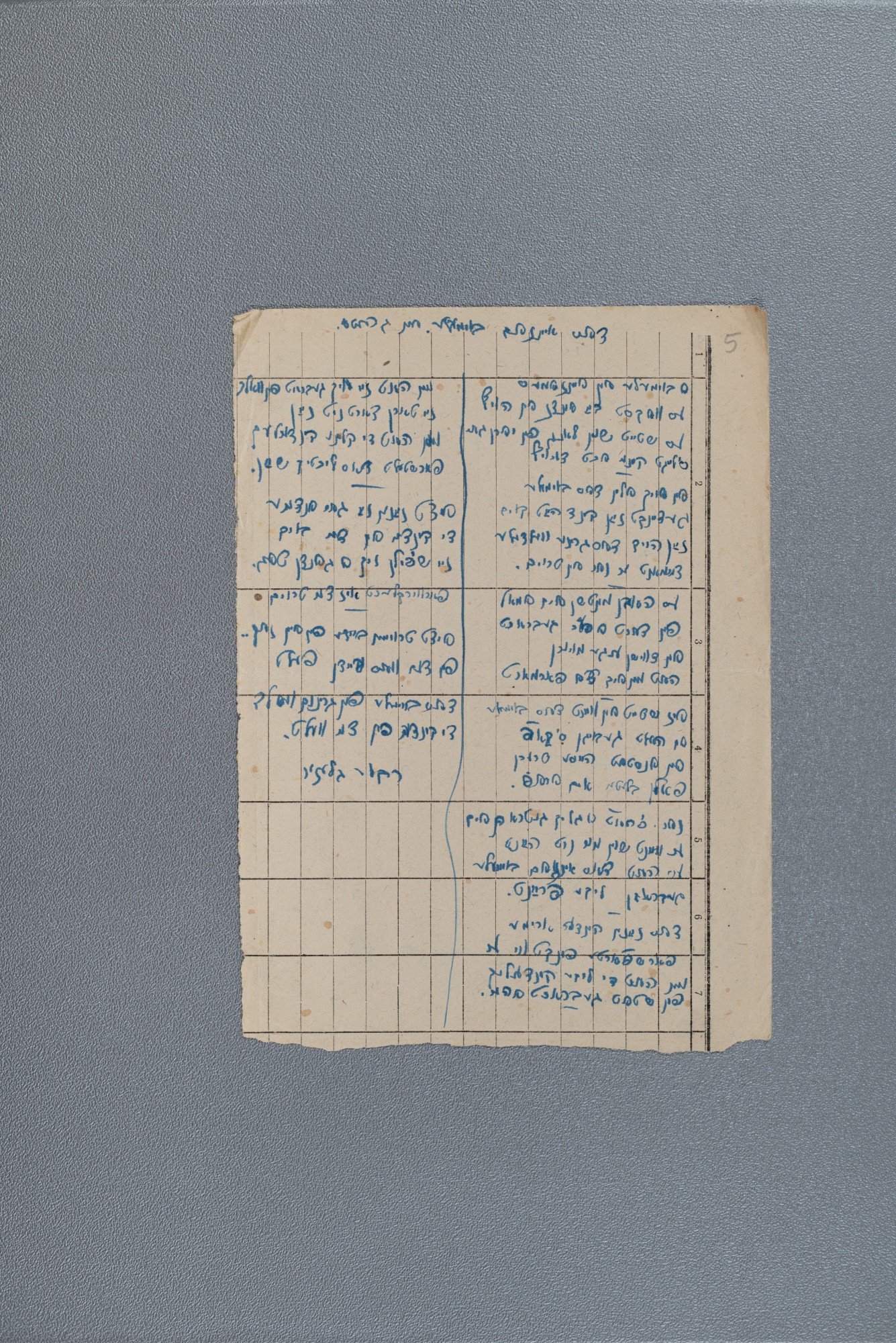Exhibit of the month |
← |
Published: 2020-07-13

Riklė Glezer, The Only Tree in the Ghetto, written in Yiddish.Paper, ink, registrationNo. VŽM 4578
The songs created by Riklė Glezer (b. 1923 in Vilnius), who survived the Holocaust and became a partisan, reflect both the nostalgic moods of the Jews imprisoned in the Vilna Ghetto by reminding of what Vilnius meant for them before the Holocaust, and the militant emotions of Jewish partisans who fought the Nazis and survived the Holocaust. The first group of songs by Riklė Glezer includes such songs as It was a summer day, Life in the ghetto is dark and gray, and The only tree in the ghetto. Yet another category of Glezer’s songs is represented by the song I am free. It was written in the first days after the war when Riklė Glezer was already a partisan. Manuscripts of her verses are stored at the Vilna Gaon Museum of Jewish History.
Works created by the inmates of the Vilna Ghetto were collected and compiled by Szmerke Kaczerginski, a writer who before the war belonged to the group of Jewish writers and artists Jung Vilne (Young Vilnius, since 1929), later was a prisoner of the Vilna Ghetto and member of the Paper Brigade who together with other members of the brigade rescued Jewish manuscripts, books and ritual objects from the Nazis, and as a member of partisan units took part in the fight against the Nazis. After the war, in 1947 in Paris he published songs composed in the Vilna Ghetto that were released by the Vilnius Union in France (in Yiddish - Farband fun di vilner in Frankraich).
Riklė Glezer's poem The Only Tree in the Ghetto stands out for its subtle lyricism. Today's Vilnius that lies outside the Museum’s window is sultry and breathing heat in July. It seems to be inviting to spread the word about this particular poem by Riklė Glezer out of the multitude of preserved Lithuanian Jewish manuscripts created in the ghettos in Lithuania. Let everybody feel the author's nostalgia for her home on the other side of the ghetto wall and her longing for summer greenery. The greenery that is represented by the only tree in the ghetto which, like the ghetto prisoners, has been displaced from its native home - the forest – and brought to the ghetto:
There is a lonely tree
Growing in our yard,
It has been beautiful for many years
And doesn’t take up space.
We have a lonely tree
That remembers its childhood trunk.
Only in its dreams it sees
Its slender green forest.
Once upon a time
People brought it from there,
And now it stands exhausted,
Thrusted in between the stonework.
The tree stands there and cries
With its head down low.
And instead of burning tears
Its leaves fall to the ground.
By a touch of luck
It no longer cries today.
For the lonely tree
Was brought a dear friend.
These were poor children,
As upset as the tree,
Dear children
From the city that were brought to this place.
And today they were taken to the forest,
They had not been there yet.
And today little kids
Presented the daylight.
Here they stood a little different -
Children and the tree.
They played all day,
Their dreams came true.
They dreamed of the things
Each of them was missing:
The tree dreamt of a green forest,
The children dreamt of the world.
Signed: Riklė Glezer
Prepared by Ilona Murauskaitė, conservationist and researcher of written holdings at VGMJH.
© Photo courtesy of Paulius Račiūnas
© From the holdings of VGMJH
| ↑ | ← |
